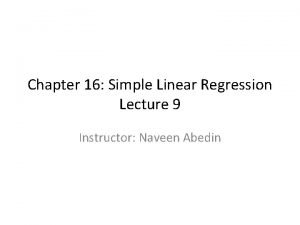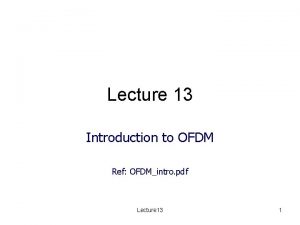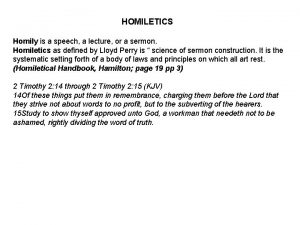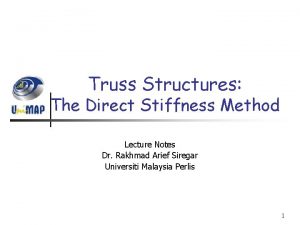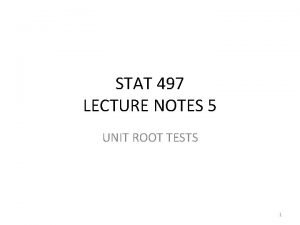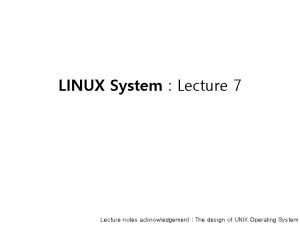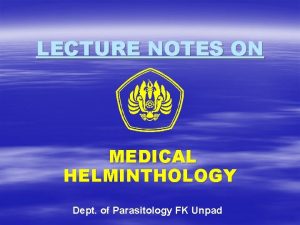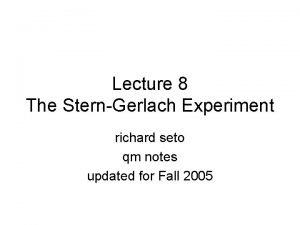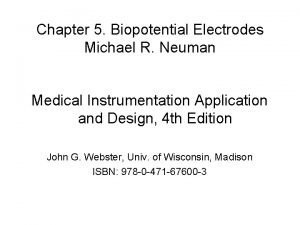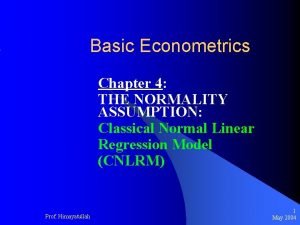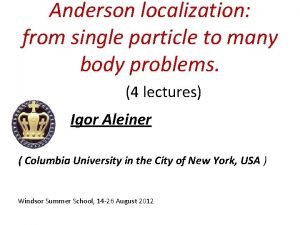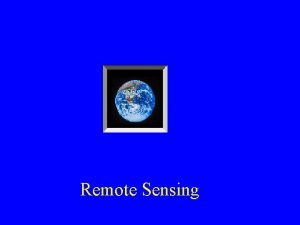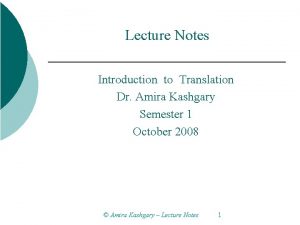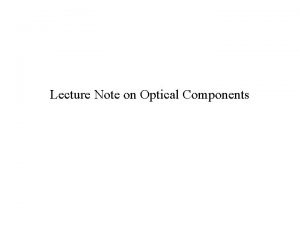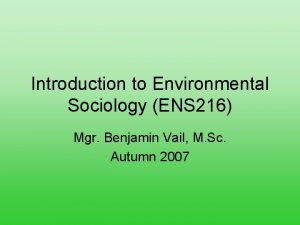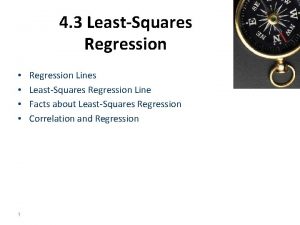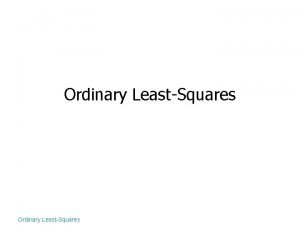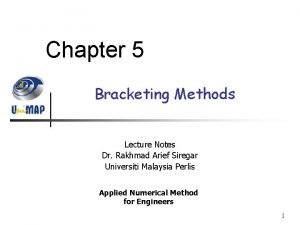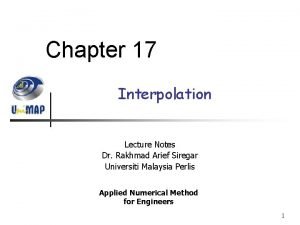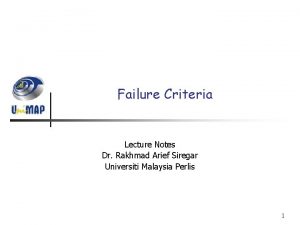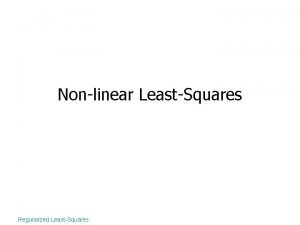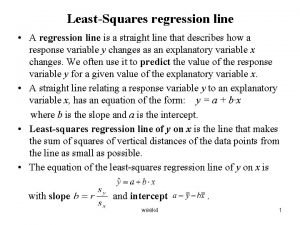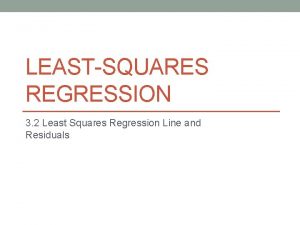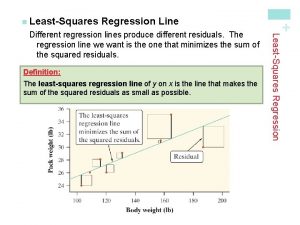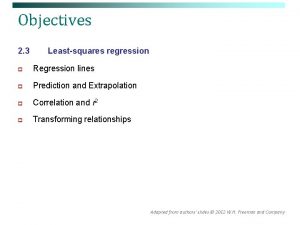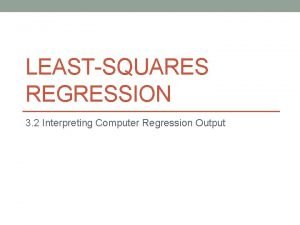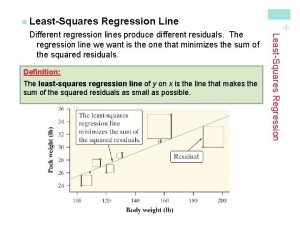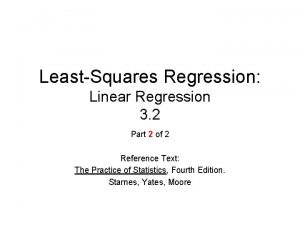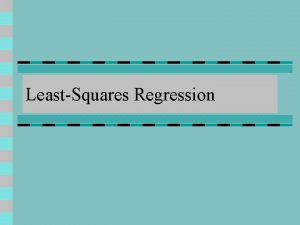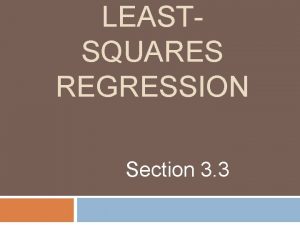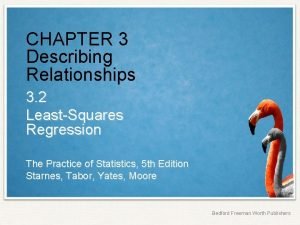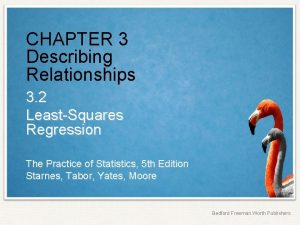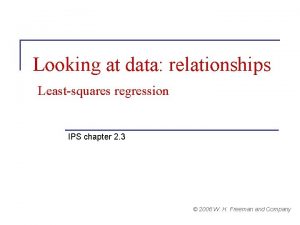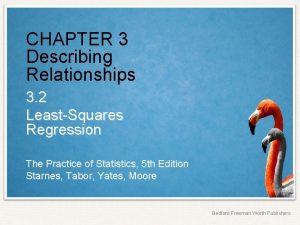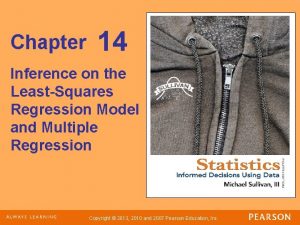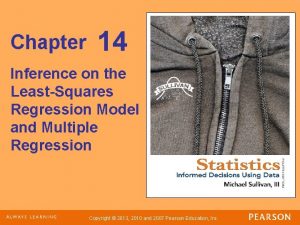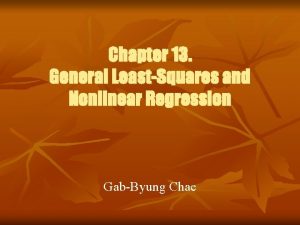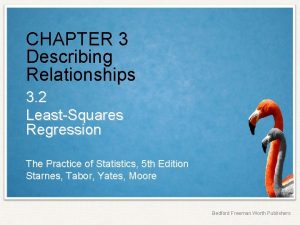Chapter 17 LeastSquares Regression Lecture Notes Dr Rakhmad




































































- Slides: 68

Chapter 17 Least-Squares Regression Lecture Notes Dr. Rakhmad Arief Siregar Universiti Malaysia Perlis Applied Numerical Method for Engineers 1

2

Curve Fitting 3

Curve Fitting 4

Curve Fitting 5

Simple Statistics 6

Regression Polynomial fit Experimental data Least-squares fit 7

Linear Regression n The simplest example of a least-squares approximation is fitting a straight line a 0 and a 1 are coefficients representing the intercept and the slope e is the error or residual between the model and the observations 8

Linear Regression n By rearranging: e is the error or residual, the discrepancy between the true value of y a 0+a 1 x is the approximate value 9

Criteria for a “Best” Fit n By minimizing the sum of the residual error n n is total number of points 10

Criteria for a “Best” Fit n By minimizing the sum of absolute residual error n n is total number of points 11

Criteria for a “Best” Fit n By minimizing the sum of the squares of the residuals between the measured y and the y calculated with the linear mode 12

Best fit Minimizes the sum of the residuals Minimizes the sum of the absolute value of residuals Minimizes the maximum error of any individual point 13

Least-Squares Fit of a Straight Line n Differentials: 14

Least-Squares Fit of a Straight Line n n After several mathematical steps, a 0 and a 1 will yields: Where y and x are the means of y and x, respectively 15

Ex. 17. 1 n Fit a straight line to the x and y values in the first two columns of Table below. 16

Ex. 17. 1 n The following quantities can be computed 17

Ex. 17. 1 n a 1 and a 0 can be computed: 18

Ex. 17. 1 n The least-squares fit is: 19

Problem 17. 4 n Use least-squares regression to fit a straight line to: 20

Problem 17. 4 21

Quantification of Error of Linear Regression n Squared of residual error: 22

Quantification of Error of Linear Regression n n If those criteria are met, a “standard deviation” for regression line can be determined as: where: Sy/x is called standard error of estimate. Subscript y/x means the error is for a predicted value of y corresponding to a particular value of x 23

Quantification of Error of Linear Regression The spread of the data around the mean The spread of the data around best fit line 24

Quantification of Error of Linear Regression Small residual errors Large residual errors 25

Quantification of Error of Linear Regression n n The difference between the two quantities, St –Sr, quantifies the improvement or error reduction due to describing the data in terms of a straight line. The difference is normalized to St to yield: r 2 : coefficient of determination r : correlation coefficient 26

Ex. 17. 2 n Compute the total standard deviation, the standard error of the estimate and the correlation coefficient for the data in Ex. 17. 1 27

Ex. 17. 2 n Solution Standard deviation: n Standard error of estimate: n n The extent of the improvement is qualified because sy/x < sy the linear regression model has merit 28

Ex. 17. 2 n n n Solution The correlation coefficient: These results indicate 86. 8 percent of the original uncertainty has been explained by the linear model 29

Linearization of Nonlinear Relationships n n Linear regression provides a powerful technique for fitting a best line to data. How about data shown below? 30

Linearization of Nonlinear Relationships n Exponential equation Transformations can be used to express the data in form that is compatible with linear regression By natural logarithm n A straight line with a slope 1 and intercept of ln 1 31

Linearization of Nonlinear Relationships n Power equation By base-10 logarithm n A straight line with a slope 2 and intercept of log 2 32

Linearization of Nonlinear Relationships n The saturation-growth-rate equation By inverting n A straight line with a slope 3 / 3 and intercept of 1/ 3 33

34

Ex. 17. 4 n Fit Eq. below to the data in table 17. 3 using a logarithmic transformation of the data. 35

Ex. 17. 4 n Intercept of log 2 n Slope of 1 Intercept data 36

Polynomial Regression 37

Polynomial Regression n This method can utilize the least-squares procedure to fit the data to a higher-order polynomial. 38

Polynomial Regression n Derivation with respect to each unknown coefficients of polynomial as in 39

Polynomial Regression n n Derivations can be set equal to zero and rearranged as: How to solve it? 40

Polynomial Regression n In matrix form n What method can be used? 41

Polynomial Regression n n The two dimensional case can be easily extended to an m-th order polynomial as: The standard error for this case is formulated as 42

Ex. 17. 5 n Fit a second-order polynomial to the data in table below: 43

Ex. 17. 5 n Solution: m=2, n=6 44

Ex. 17. 5 n n Solution: The simultaneous linear equation are: 45

Ex. 17. 5 n Solution: By using gauss elimination it will yield: n a 0=2. 47857, a 1=2. 35929 and a 2=1. 86071 n The least-square quadratic equation: n 46

Ex. 17. 5 n The standard error: 47

Ex. 17. 5 n The coefficient of determination: 48

Ex. 17. 5 99. 851% of the original uncertainty has been explain by the model 49

Assignment 3 n n Do Problems 17. 5, 17. 6, 17. 7, 17. 10 and 17. 12 Submit next week 50

Multiple Linear Regression n For this section, two-dimensional case, regression line become a plane 51

Multiple Linear Regression n This method can utilize the least-squares procedure to fit the data to a higher-order polynomial. 52

Multiple Linear Regression n Derivation with respect to each unknown coefficients of polynomial as in 53

Multiple Linear Regression n Derivations can be set equal to zero and rearranged as in matrix form 54

Multiple Linear Regression n n The two dimensional case can be easily extended to an m-th order polynomial as: The standard error for this case is formulated as 55

Ex. 17. 6 n n The following data was calculated from equation: y=5+4 x 1 -3 x 2 Use multiple linear regression to fit this data 56

Ex. 17. 6 57

Ex. 17. 6 n Solution 58

Ex. 17. 6 n n solution a 0=5, a 1=4 and a 2=-3 59

Problems 17. 17 n n Use multiple linear regression to fit. Compute the coefficients, the standard error of estimate and the correlation coefficient 60

Problems 17. 17 61

Problems 17. 17 n Solution 62

Nonlinear Regression n The Gauss-Newton method is one algorithm for minimizing the sum of the squares of the residuals between data and nonlinear equation. For convenience 63

Nonlinear Regression n n The nonlinear model can be expanded in a Tailor series around the parameter values and curtailed after the first derivative Ex. For a two-parameter case: 64

Nonlinear Regression n It needs to be linearized by substituting n into n It will yields 65

Nonlinear Regression n In matrix form 66

Nonlinear Regression n By applying least-square theory to n It will yield in normal equation: n By using ave Eq. we can compute values for: 67

Ex. 17. 9 68
 Nonlinear regression lecture notes
Nonlinear regression lecture notes 01:640:244 lecture notes - lecture 15: plat, idah, farad
01:640:244 lecture notes - lecture 15: plat, idah, farad Simple linear regression and multiple linear regression
Simple linear regression and multiple linear regression Multiple regression
Multiple regression Survival analysis vs logistic regression
Survival analysis vs logistic regression Logistic regression vs linear regression
Logistic regression vs linear regression Linear regression lecture
Linear regression lecture Project procurement management lecture notes
Project procurement management lecture notes Theology proper lecture notes
Theology proper lecture notes Public sector management lecture notes
Public sector management lecture notes Wwwwwhh
Wwwwwhh Electricity and magnetism lecture notes
Electricity and magnetism lecture notes Classical mechanics
Classical mechanics Physical science lecture notes
Physical science lecture notes Power system dynamics and stability lecture notes
Power system dynamics and stability lecture notes Microbial physiology lecture notes
Microbial physiology lecture notes Mechatronics notes ppt
Mechatronics notes ppt Limits fits and tolerances
Limits fits and tolerances Financial engineering lecture notes
Financial engineering lecture notes Bjt lecture notes
Bjt lecture notes Software engineering lecture notes
Software engineering lecture notes Introduction to ofdm
Introduction to ofdm Land use planning '' lecture notes
Land use planning '' lecture notes Project management lecture notes doc
Project management lecture notes doc Lecture notes on homiletics
Lecture notes on homiletics Foundation engineering lecture notes
Foundation engineering lecture notes Image processing lecture notes
Image processing lecture notes Intermediate microeconomics lecture notes
Intermediate microeconomics lecture notes Parallel and distributed computing lecture notes
Parallel and distributed computing lecture notes Decision theory lecture notes
Decision theory lecture notes Advanced inorganic chemistry lecture notes
Advanced inorganic chemistry lecture notes 50h8 tolerance
50h8 tolerance Stiffness matrix method lecture notes
Stiffness matrix method lecture notes Goodrich method of flood routing
Goodrich method of flood routing Unit root time series
Unit root time series Shape memory alloys lecture notes
Shape memory alloys lecture notes Notes on research methods
Notes on research methods Financial institutions and markets lecture notes ppt
Financial institutions and markets lecture notes ppt Physics 101 lecture
Physics 101 lecture Om 306
Om 306 Nlp lecture notes
Nlp lecture notes Linux lecture notes
Linux lecture notes General parasitology lecture notes
General parasitology lecture notes Introduction to biochemistry lecture notes
Introduction to biochemistry lecture notes Stern-gerlach experiment lecture notes
Stern-gerlach experiment lecture notes Land use planning '' lecture notes
Land use planning '' lecture notes Exploratory data analysis lecture notes
Exploratory data analysis lecture notes Slide todoc.com
Slide todoc.com Elements and principles of interior design ppt
Elements and principles of interior design ppt Bayesian classification in data mining lecture notes
Bayesian classification in data mining lecture notes Data mining lecture notes
Data mining lecture notes Computer architecture lecture notes
Computer architecture lecture notes Franck-condon principle slideshow
Franck-condon principle slideshow Biopotential electrodes lecture notes
Biopotential electrodes lecture notes Catalysis lecture notes
Catalysis lecture notes Sargur srihari
Sargur srihari Gujarati basic econometrics lecture notes ppt
Gujarati basic econometrics lecture notes ppt Anderson localization lecture notes
Anderson localization lecture notes Operating system lecture notes
Operating system lecture notes Microwave remote sensing lecture notes
Microwave remote sensing lecture notes Lecture note tiu
Lecture note tiu Natural language processing nlp - theory lecture
Natural language processing nlp - theory lecture Sensitivity analysis lecture notes
Sensitivity analysis lecture notes Foetotomy
Foetotomy Translation lecture notes
Translation lecture notes Optical amplifiers lecture notes
Optical amplifiers lecture notes Land use planning lecture notes
Land use planning lecture notes Environmental sociology examples
Environmental sociology examples Factor analysis lecture notes
Factor analysis lecture notes






